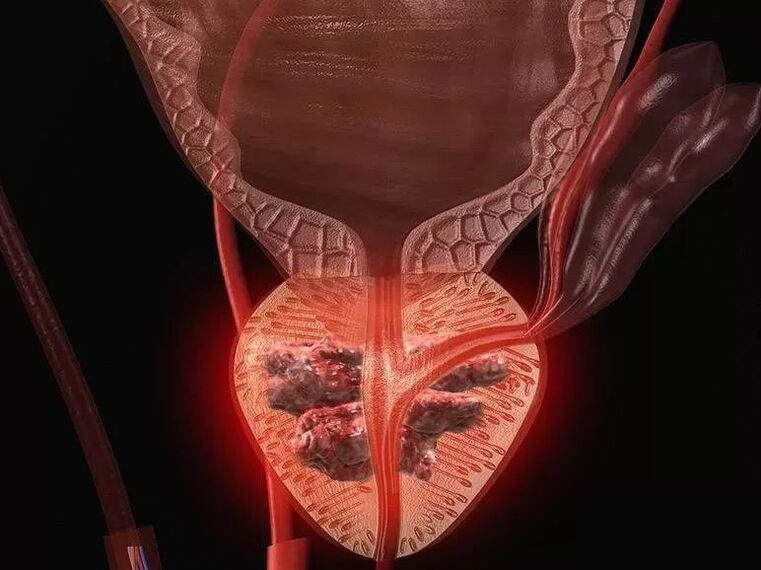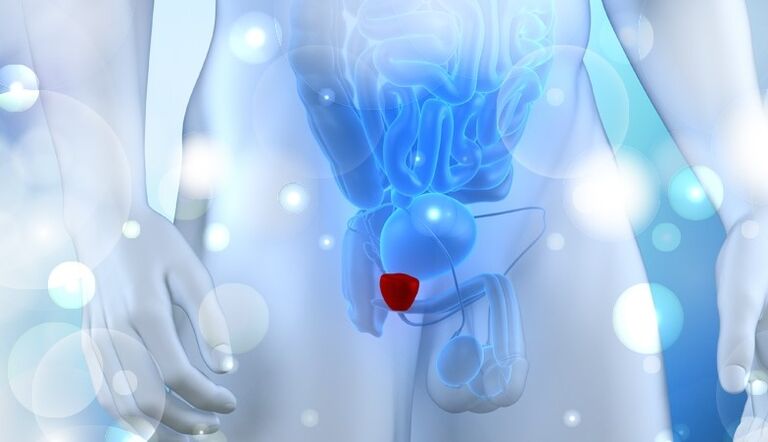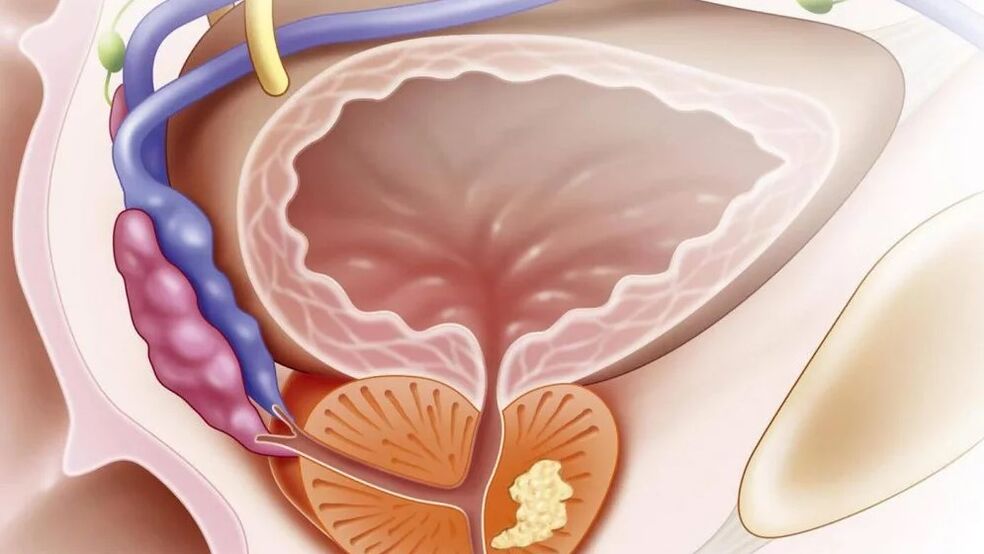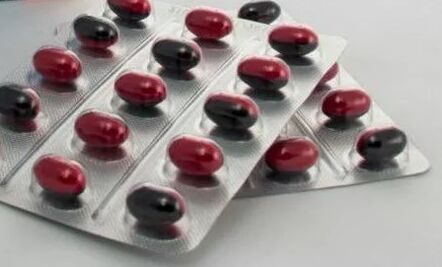One of the most dangerous complications of acute prostatitis can be an abscess of the prostate gland. This is a focal purulent inflammation, at which body temperature can rise to 40 degrees. Signs of the abscess are acute intensive pain and difficult urination. In the absence of medical care, swelling of the glandular tissues develops and the urethra lumen is completely blocked.

Prostatitis is the most common urological pathology in men of reproductive age. According to polls, each third of them at least once in his life experienced symptoms that can be interpreted as inflammation of the prostate gland. The main cause of the development of bacterial prostatitis is an infection, however, only in the case of acute prostatitis, the infection leads to a sharp inflammation of the prostate gland, which is explained by the anatomical features of the structure of the male body.
In the chronic form of prostatitis, the infection can also be the cause, the trigger mechanism of inflammation, but the inflammation of the prostate gland, which requires treatment, can develop only against the background of other factors:
- prolonged hypothermia of a different nature: it can be both a bathing in an ice hole, or sitting on cold stones, etc. ;
- sedentary (sedentary) lifestyle, leading to stagnation of blood, which can also cause inflammation;
- irregular sex life: this refers to both excessive abstinence and excessive activity;
- Transferred urological (urethritis, for example) or sexually transmitted (gonorrhea, chlamydia, etc. ) disease: there is also a hidden presence of these diseases, the result of which becomes prostatitis;
- regular problems with stools (most often chronic constipation);
- The use of spicy, smoked and pickled foods, alcohol and some other products can also cause inflammation of the prostate gland
- Other factors that cause impaired immunity: excessive loads, multiple or long stress.
Prostatitis: consequences
In case of untimely appeal to the urologist, acute bacterial prostatitis can lead to the formation of an abscess and edema of the prostate gland, which is able not only to complicate urination, but to make it completely impossible.
The latter, like inflammation, can cause serious intoxication of the body, characterized, among other things, by a sharp rise in temperature up to 40-41 ° C (with sharp temperature fluctuations within 1 degree).
However, most often complications of this kind can be avoided, since manifestations of prostatitis of this species usually force the patient not to delay the visit to a specialist.
In the case of a chronic form of the disease, the symptoms of which are not so pronounced, the development of complications without proper and timely treatment is quite possible. Without appropriate drug and therapeutic effect, inflammation can spread to other organs of the genitourinary system, which can lead to development:
- cystitis - inflammation of the bladder;
- pyelonephritis - kidney inflammation;
- vesiculitis - inflammation of the seed bubbles;
- Inflammation of the testicles and appendages of the testicles.

It must be remembered that inflammation of the eggs and testicles is one of the most common complications and can cause male infertility, which, in turn, is treated for a long time, difficult and not always successful, so the faster to treat prostatitis, the more chances to avoid complications of this kind.
In some cases, the consequence of chronic prostatitis may be its transition to a calculus form. Calcule prostatitis is characterized by the formation of calculi (small pebbles) in the excavating ducts of the gland, to get rid of which is very drug.
In addition, the cause of prostatitis is a hormonal failure caused by insufficient production of hormones with the sex glands.
The development of prostatitis is facilitated by a number of certain causes. Very often, signs of prostatitis are manifested in those men who conduct irregular sex life, often undergo hypothermia and injuries.
In addition, prostatitis can develop as a result of a decrease in immunity, worsening blood flow and lymph circulation in the men of the man’s small pelvis, as a result of a hormonal failure, which provokes a certain level of androgynous failure.
A factor contributing to the manifestation of prostatitis is also considered a number of infections that are transmitted sexually. Therefore, prostatitis is often manifested in men after unprotected intercourse.
There are 4 main forms of prostatitis: acute bacterial prostatitis, chronic bacterial prostatitis, non -bacterial prostatitis and prostatinia.
In people under 35 years old, the disease usually proceeds in the form of acute bacterial prostatitis. Bacterial prostatitis is called when there is laboratory confirmation of the presence of infection.
Most often, it turns out to be chlamydia, trichomoniasis, gardnerellosis or gonorrhea. The infection enters the prostate gland from the urethra, bladder, rectum, through the blood and lymphatic vessels of the pelvis.

However, recent studies prove that in most cases, the infection is layered on existing disturbances in the structure of the tissue of the prostate and blood circulation in it. With non -bacterial prostatitis, bacteria cannot be isolated, although this does not exclude their presence.
In older patients, chronic forms of the disease are more often diagnosed. Prostatodinia is called the presence of a clinical picture of prostatitis, a seal of prostate tissue without signs of its inflammation.
Classification
In accordance with the criteria of the American National Institute of Health (NIH USA), four categories of prostatitis are distinguished from 1995:
- Acute (bacterial) prostatitis
- Chronic bacterial prostatitis
- Chronic non -bacterial prostatitis / chronic pelvic pain (CP / CPPS)
- Inflammatory chronic pelvic pain syndrome (leukocytes are determined in the secret of prostate, urine and ejaculate)
- Non -inflammatory chronic pelvic pain syndrome, in which signs of inflammation are absent
- Asymptomatic chronic prostatitis
Currently, an international classification of prostatitis has been adopted, which is the most complete and covering all types of inflammation:
- Category I. Acute prostatitis;
- Category II. Chronic prostatitis bacterial;
- Category III. Nebacterial chronic prostatitis/chronic pelvic pain syndrome is a disease in which an infection that lasts more than 3 months is not detected;
Subcategory III A. Syndrome of chronic inflammatory pelvic pain (leukocytes are determined in the secret of prostate);
Subcategory III B. Syndrome of chronic non -inflammatory pelvic pain (there are no leukocytes in the secret of prostate); - Category IV. Speepomically proceeding chronic prostatitis (leukocytes are present in the secret of the prostate, the patient does not make complaints, the disease is detected by chance).
Treatment of prostatitis varies depending on what form of the disease occurs in a man. So, bacterial prostatitis can occur both in acute form and as a chronic disease.
Quite often, non -bacterial prostatitis is also diagnosed as a chronic ailment. Such a variety of prostatitis is also called a syndrome of chronic pelvic pain.
In such patients, all symptoms characteristic of prostatitis are observed, but there are no bacteria in the secret of the prostate.
Acute bacterial prostatitis is characterized by rapid development. At the same time, a person suffers from severe pain, there are signs of general intoxication. Symptoms in the chronic form of the disease are much less clearly manifested. In this case, the disease manifests itself gradually.
And if the course of prostatitis of the acute form, as a rule, ends with the complete healing of the disease, then with chronic prostatitis, relapses appear quite often. This should be taken into account in the treatment of prostatitis at home. In addition, in the presence of inflamed stones in the prostate gland, the therapy of the disease is a more complex process.

With non -bacterial prostatitis (chronic pelvic pain), a person develops severe pains that are localized in the pelvic area, genitals, and perineum. There are no signs of inflammation in the prostate.
This disease is common among modern men of different age groups, but most often the ailment affects people of 35-45 years. Until today, experts express several assumptions about what are the causes of this form of prostatitis.
So, there is a theory that this syndrome provokes damage to the tissues of a bacterial prostate. In addition, there is an opinion that the disease is manifested due to urine falling into the prostate gland.
As we have already said, the acute and chronic course of the disease is possible. In this case, the appearance of acute prostatitis is most often provoked by gram-negative bacteria.
This form of the disease is relatively easy to diagnose and treat by taking antibiotics. At the same time, cases of chronic non -bacterial prostatitis are very often found among men, which is more difficult to diagnose and has no connection with a certain infectious lesion.
Therefore, in the case of chronic prostatitis, treatment with antibiotics will not be able to give the proper effect. According to statistics, about 35% of men over fifty years old, chronic prostatitis.
Treatment of chronic and acute prostatitis
In the case of signs of prostatitis, both acute and chronic, you should consult a urologist, who will establish what kind of diagnosis takes place, and also help both cure the disease and strengthen the body as a whole. It should be remembered that this applies equally to both types of prostatitis, each of which can lead to its complications.
Primary reception
The primary reception of a specialist involves a survey and examination of the patient (including rectal, which allows you to determine the degree and nature of the increase in the prostate gland), as well as the appointment of the necessary tests and other diagnostic measures.
The first and important sign of prostatitis is impaired urination that causes discomfort. Another sign of the disease is the rapid urination, but in which Urina comes out in small portions.
Symptoms of acute form of the disease

The disease is formed suddenly and is characterized by pronounced manifestations.
- frequent painful urination;
- pain during defecation;
- impaired potency;
- pain in the groin, in the sacrum zone and the anus;
- high sweating;
- fatigue.
Each male body is individual, and symptoms can manifest itself separately, or all at once.
Signs of a chronic form of the disease
Chronic prostatitis is usually characterized by the same signs, however, it proceeds with less pronounced symptoms.
In addition, the following manifestations may be observed:
- increased irritability;
- a feeling of overflowing bladder;
- deterioration in quality, or lack of orgasm;
- Selection during defecation from the urethra.
The very first signs of prostatitis, which a man should definitely pay attention to and contact the urologist:
- Severe pain during urination. At the end of the process, an unpleasant burning sensation is felt.
- Improving body temperature.
- The feeling of not completely emptying bladder.
- Discomfort in the crotch and groin area.
- Insufficient pressure of the jet while visiting the toilet.
Treatment of prostatitis is carried out depending on the form of the disease. Acute inflammation is an indication for the hospitalization of the patient in the urological hospital, with chronic patients undergo the course of therapy at home. If the cause of the disease was a sexually transmitted infection, both partners should take antibiotics.
In the treatment of acute prostatitis, it is important that systemic antibacterial treatment is important.

The main groups of drugs include:
- Antibiotics. Used in the form of tablets, capsules, candles, syrups and other types.
- Anti -inflammatory drugs.
- Spasmalgotics and analgesics.
- Preparations to increase immunity.
- Vitamins.
- Antistress medicines.
Massage
This procedure is one of the most effective methods for treating prostatitis. Thanks to her, accumulated in the prostate gland, the secret is squeezed out of it, and then independently removed through the urethra. In addition, prostate massage helps to improve blood supply to the gland tissue, which increases the effectiveness of antibacterial and local therapy.
Physiotherapy
Physiotherapeutic treatment helps to improve the trophism of the tissue of the prostate gland and accelerate the recovery process. The following physiotherapy methods are possible:
- transrectal microwave hyperthermia,
- Diadinamophoresis,
- laser therapy,
- Ultrasonic phonophoresis.
Exercise
The main signs of the disease
A disease such as prostatitis in most men develops suddenly. In the patient, the temperature rises sharply, a feeling of weakness, fever appear. The main sign of inflammation of the prostate is intense pain in the perineum, which gives to the pubic area, anal opening, sacrum. During urination, defecation and with any other tension of the pelvic muscles, pain increases.






























